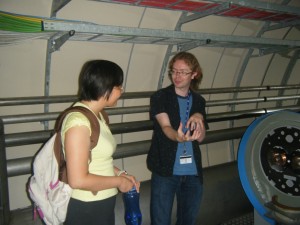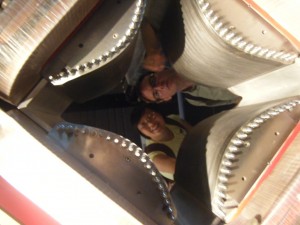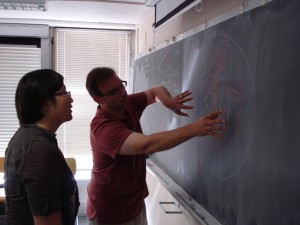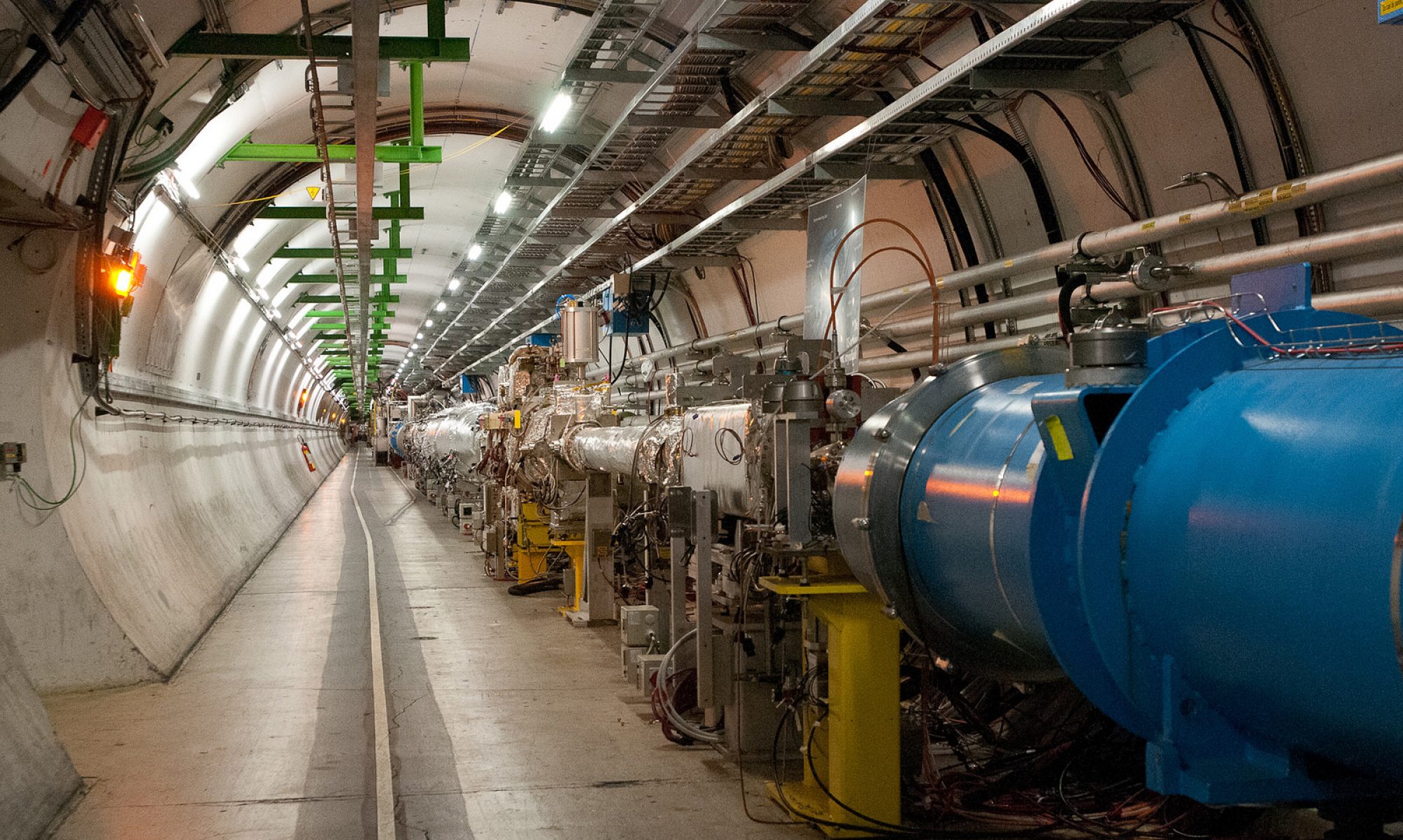This was originally posted in the SMU CERN blog (http://blog.smu.edu/smucern). It’s reproduced here because I am the author! 🙂
What DOES a professor do during the summer months? I found it amusing – and, to be fair, a bit reminiscent of my own beliefs when I was a student – that several undergraduates at SMU thought I took the summer off. So, just what DOES a professor do during the summer?
It depends on the professor, but many of us devote ourselves to teaching classes and many devote ourselves to research. Of course, we mingle the disciplines a lot – just because you’re teaching doesn’t mean you aren’t thinking deep thoughts about physics, and just because you’re doing research doesn’t mean you aren’t ready to teach at a moment’s notice.

Tingting (left) and Aidan (right) discuss particle accelerator beam structure next to a full-scale model of the Large Hadron Collider.
For my own case, it’s been a lot of both. I am joined this summer by an SMU graduate student, Tingting Cao (featured recently in [1]). She has never worked on an experiment like ATLAS before. The sheer magnitude of things you need to learn to make sense of day-to-day ATLAS physics and activities is immense. Tingting’s devotion and enthusiasm have so far carried her a long way in this regard. However, as a professor it is incumbent upon me to insure that TIngting has all the tools she needs not only to answer questions, but to know how to ask lots of questions.
My post-doc, Aidan, has been instrumental in working with Tingting to discuss physics and to teach her how to write analysis software (using C++, the language du jour of big collider physics). One of the great traps of software is that you can spend so much time learning just how to do it, you forget why you’re doing it. In collider physics, there is an ever-present tension between making progress (by writing analysis code) and seeing “the big picture” (why you are writing code in the first place). Aidan and I have been working hard, with a lot of help from Tingting’s curiosity, to keep that tension at bay.

In the foreground, a “warm” quadrupole magnet (meaning it operates at room temperature, rather than the superconducting temperatures needed by the Large Hadron Collider). In the background, Tingting and I discuss how such magnets act to focus charged particles.
We recently used the Microcosm, a teaching and learning center at CERN (which Aidan will discuss in a separate post) to learn about particle physics hardware. For instance, we discussed how magnets are to electrically charged particles as lenses are to light: they steer and focus the beams so that they are right where you want them. Shown below is a quadrupole magnet – a magnet with two pairs of North and South Poles – which act to focus charged particles. You need a long sequence of these to control the size of the beam, and the care and skill that goes into building and coordinating such magnets is incredible.
It’s not always about the hardware. Sometimes, you just want to understand why subatomic particles like quarks lead not to single particles in your detector, but “jets” – cone-like sprays containing dozens of particles smashing into your tracking system, your energy readout system (“calorimeters”), and your muon system (needed to detect the less-interacting, heavy cousin of the electron – the muon). Tingting asked for a lecture about how you go from simple diagrams of quarks and leptons – “Feynman Diagrams” – to the complex signatures of particles in the ATLAS detector. Aidan and I spent over an hour going step-by-step through an example diagram, discussing all the physics we could. In fact, veterans of my “Modern Physics” class from last semester may recall a problem involving whether or not top quarks can bind together via the strong force [2]. Tingting asked about just that process, in the context of other kinds of quarks, and we discussed that very problem as part of the lecture.

Tingting and I discuss what different kinds of particles will look like in an ATLAS-like detector (photo by Aidan Randle-Conde).
Teaching doesn’t stop when the summer starts for those of us who do research in the summer, just as new ideas for physics papers and projects don’t stop when the teaching starts. Being a physicist sometimes demands both, and it makes the enterprise all the sweeter to know that it’s impossible to separate the doing from the learning.
[1] “Knowing the Hardware”, by Aidan Randle-Conde, SMU CERN Blog (http://blog.smu.edu/smucern/2010/07/knowing_the_hardware_1.html)
[2] Problem SS-13: “Top Mesons” (PHY 3305, Spring 2010) http://www.physics.smu.edu/sekula/phy3305/homeworksolutions010.pdf

